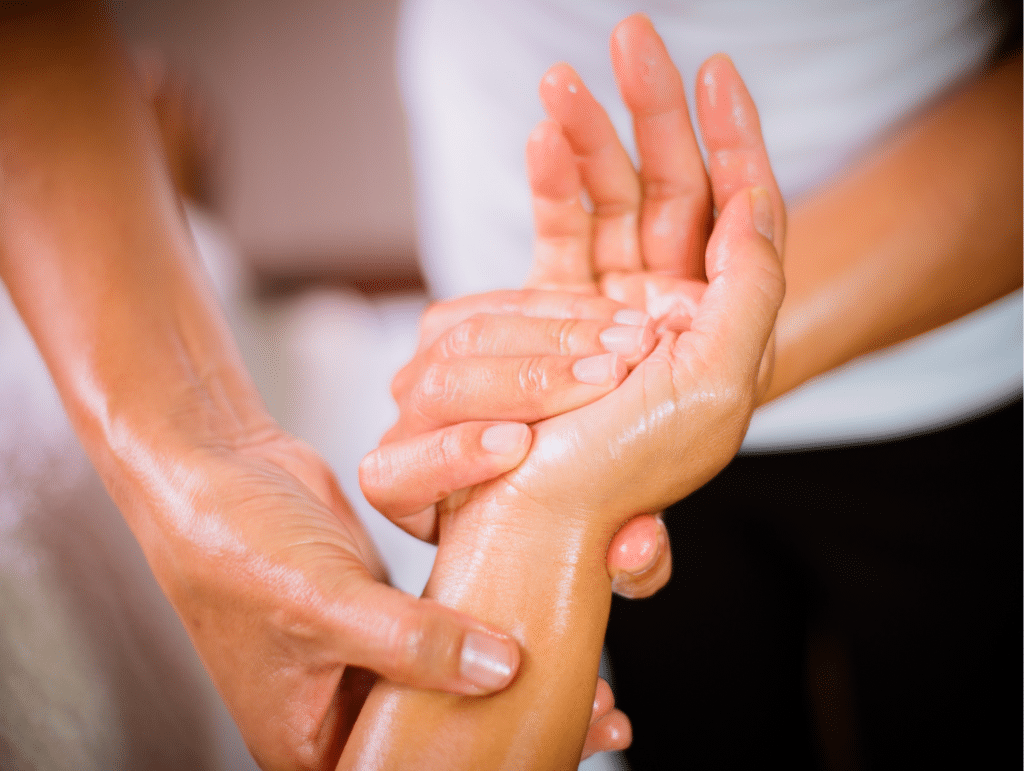Isaac specialises in the area of Myotherapy with extensive experience as both a clinician and educator. He has completed additional studies in Health and Exercise Science and believes in a holistic approach to healthcare.
With over 10 years of experience in the field, his Myotherapy practice has allowed him to work in various settings, including clinical and sporting sectors, along with mentoring of other practitioners. He has lectured and presented at many different RTOs, TAFEs and Universities and is currently managing various courses and curriculum provision within the Health and Wellness areas. Isaac is committed to the industry and ensuring the highest quality education of manual therapists.

Remedial Massage Therapy is a massage based application used to treat a number of conditions affecting the muscles, tendons, and ligaments of the body. Remedial Massage is a key component of sports medicine, but is beneficial for anyone suffering from pain or injury in a particular area of the body. Massage is simply the manipulation of the soft tissues of the body—the muscles, tendons and ligaments. A massage therapist’s hands are her most important tool, which she uses to treat patients, and also to identify physical and bio-mechanical problems. The therapist palpates the patient’s body to determine the condition of the tissues and the source of any pain, and suggests the correct form of remedial treatment based on her analysis.
The word “massage” is likely to have emerged from the Greek word “Massein”, meaning “to knead,” or the Arabic word “mas’h” meaning “to press softly”. Massage is the oldest form of physical medicine in existence, tracing back to early Chinese medical manuscripts around 400 BC. The practice was advocated by the “father of medicine” Hippocrates, who was born way back in the fifth century, and was also widely used by the Romans. Julius Caesar received massage therapy to relieve neuralgia (nerve pain)!
The theory of massage was lost in Europe sometime in the early Middle Ages, but by the 16th-century, experts in the field of medicine gradually re-learned what had been lost. Between 1776 and 1839, professor Peter Ling created the scientific and therapeutic practice known as Swedish Massage, and established a teaching institute in Stockholm.
Today, massage therapy is one of the fastest growing practices in health care.
Improves joint mobility – By using joint mobilisation techniques, a Remedial Massage therapist can make a joint more mobile, and help to reduce stiffness, pain, and a quicker recovery from injury.
Improves recovery – When we damage our body tissue, collagen fibres are used to repair the injured area, which creates scarring. This collagen scarring is critical for repair, but tough in texture, and can create painful, restricted movement. Remedial Massage helps to soften and mobilise the collagen fibres, which relieves tightness and pain.
Reduces depression and anxiety – Single sessions of massage therapy have been shown to significantly reduce anxiety, dampening emotions such as apprehension, worry, and tension in both adults and children. This evidence is well-supported by scientific research. Anxiety and depression create other detrimental health problems, making massage therapy a highly effective health-booster.
Pain relief – Your skin is full of nerve endings (up to 10,000 per square metre), which can make the touch of a massage therapist a rich sensory experience that helps to relieve pain. During every moment of a massage, the cutaneous sensory nerve endings are sending thousands of impulses to the brain, creating pleasant, calming sensations, slowing the breath, and shifting into the “rest and digest” parasympathetic state. Massage works by affecting the nervous system directly, and dampening any pain that you’re feeling.
Improved heart rate regulation – Remedial Massage can include gentle stretching, which for people with low flexibility, has shown to improve the balance between their sympathetic and parasympathetic nervous systems (vagal modulation and sympathovagal balance), and resulted in better heart rate regulation.
Promotes relaxation – Remedial Massage isn’t considered as relaxing as other types of massage, but can still create a relaxing state that lowers blood pressure, increases blood flow to major muscles, improves digestion, balances blood sugar levels, and dampens chronic pain.

Deep tissue massage and trigger point therapy
With deep tissue massage, firm and flowing strokes are applied to the problem areas of the body, which eases tension. The therapist may use their thumbs, knuckles, or elbows to achieve the appropriate direction, depth, or pressure.
Trigger point therapy uses cycles of pressure and release (rest), and may be accompanied by deep breathing. This technique also helps to ease tension, and is often used in conjunction with deep tissue massage to achieve optimal results.
Stretch therapy
In this type of massage, the therapist will assist the patient with stretching various areas of the body, which helps to relieve pain, enhance flexibility, improve range of motion, and improve circulation.
Joint mobilisation
Joint mobilization therapy works by applying a low speed, passive movement of a joint, encouraging intracapsular movement, and improving stiffness and pain. It’s usually targeted at a specific problem joint.
Myofascial release
Myofascial tissue is the fibrous connective tissue that supports and protects your muscles and bones. Myofascial release works by applying a specific, local stretch-based massage technique to knotted areas of the body, or other trigger points that help to relieve pain in the affected area.
When a therapist performs myofascial release techniques, they’re often treating myofascial pain syndrome.
Thermotherapy and cryotherapy
Thermotherapy uses heated objects such as heat packs, hot water bottles, or hot baths to induce muscle relaxation, and promote blood flow.
Cryotherapy uses cooled objects such as cold compresses, ice packs, or cold baths to decrease blood flow, which reduces inflammation and the risk of tissue damage
How to choose a Remedial Massage therapist
Choosing a remedial therapist can be challenging, especially if you have never received Remedial Massage treatment before.
Here are some guidelines to follow:
Questions to ask your Remedial Massage therapist
Once you’ve found a potential Remedial Massage therapist, it’s worth asking them the following questions to ensure they are credible and a good fit for you.
In your first Remedial Massage appointment, the therapist will identify areas of pain or discomfort by completing a series of assessments that test your posture and range of motion.
For your posture, the therapist will examine you as you stand, taking note of your bone structure and muscles, and comparing each side of your body. Range of motion is tested by moving areas of your body through their full range of motion, for example moving your head fully to the left, and then bringing it fully to the right, to test the range of motion of your neck. This can be done with the physical help of the therapist (passive assessment), or by yourself (active assessment).
Once the assessment is complete, the therapist will have a better understanding of how to treat your issues.
Remedial Massage is a scientifically proven to optimise muscle performance. We hope that this guide has given you a solid overview of the therapy, and the confidence to find the right therapist for your needs.
"*" indicates required fields
You can see how this popup was set up in our step-by-step guide: https://wppopupmaker.com/guides/auto-opening-announcement-popups/
